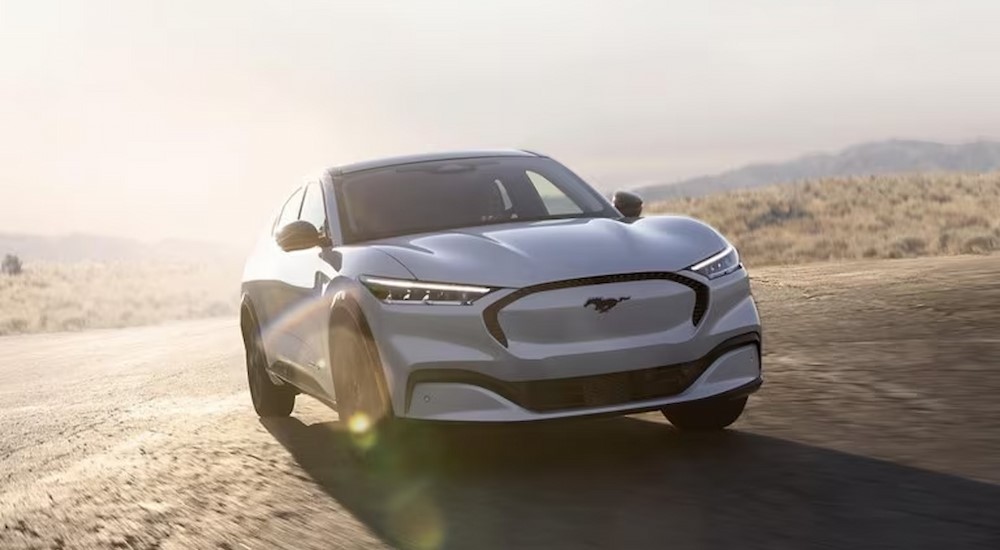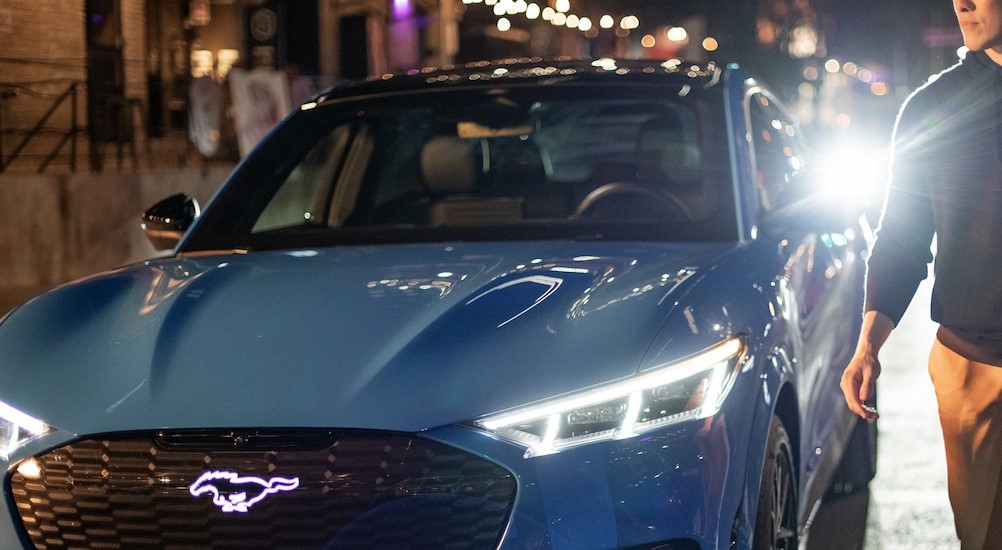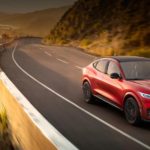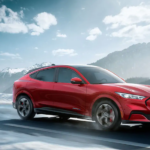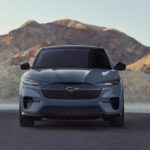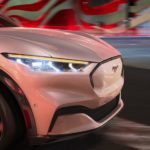If you’ve been eyeing a Ford Mustang Mach-E for sale recently, or if you’re already driving one, then you might have heard about the deal Ford struck with Tesla in 2023, allowing Ford EVs to use Tesla charging stations. That’s great news for Mach-E drivers since it expands the number of locations where you can charge your vehicle.
But what’s the timeline for this deal? And how exactly does it work? After all, this isn’t simply a matter of permission; Ford and Tesla have historically used charging cables that are physically distinct from one another. Let’s dive in and see exactly what this deal means for drivers and soon-to-be drivers of Ford EVs…
NACS vs CCS
If you aren’t familiar with the EV market, you might think that any electric vehicle can use any EV charging station; after all, that’s how it is with gas stations, and it just makes intuitive sense. But while there is a public domain charge port design known as CCS (Combined Charging System), there’s also a competing design that has been the cause of headaches for many automakers. Since Tesla is widely known for stirring up controversy, you probably won’t be surprised to learn that it created a competing design.
Tesla calls their proprietary port North American Charging Standard (NACS), and up until this deal, that was something of an aspirational name. CCS has traditionally been used by most non-Tesla automakers and is, in fact, a worldwide standard. In Europe, Tesla has actually switched to the CCS port on its vehicles and charging stations since the network of CCS chargers is so robust across the pond—but here in America, the tide seems to be turning the other way.
While there are many EV charging stations across the country, Tesla’s network of Superchargers is generally thought of as the gold standard. Not only are their charging stations numerous and located near major roadways, but they have a generous number of ports at each station and are relatively easy to operate. By contrast, other charging networks can be less reliable and can fill up quickly. On top of that, Tesla vehicles have always been able to use an adapter to charge up at CCS stations while, until now, non-Tesla EVs have been completely unable to use NASC stations.
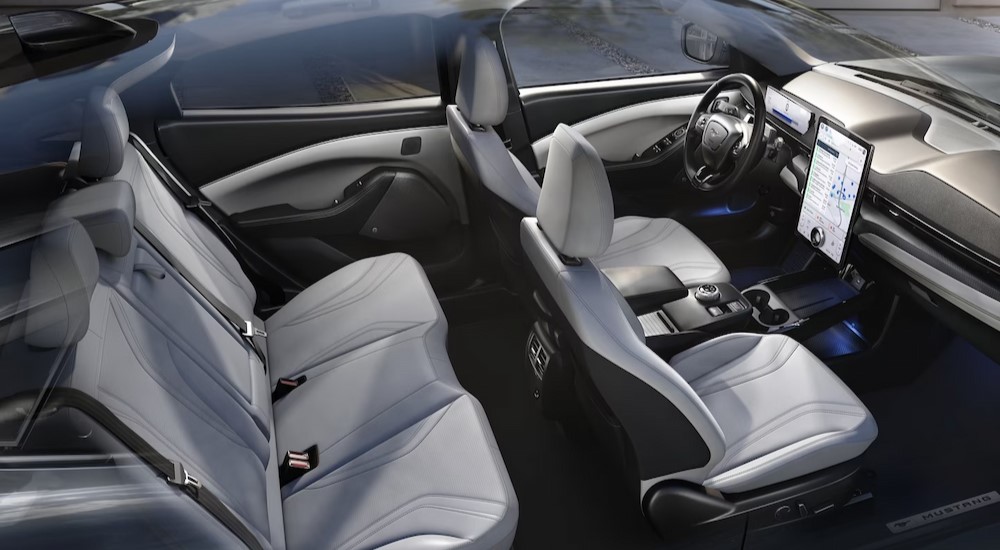
The Basics of the Deal
Ford and Tesla have reached an agreement that allows Ford drivers to use Tesla charging stations, significantly expanding the network of charging stations that they can use on daily errand runs, long road trips, and every drive between. This is especially significant because of how many Tesla charging stations allow for DC Fast Charging, which lets EV drivers add an impressive number of miles to their range in a matter of minutes rather than the hours it takes at slower charging stations. A Level 2 charger that slowly adds power to your battery may be fine in a shopping center parking lot, but the faster DC fast-chargers are necessary to make longer road trips with short pit stops possible with an EV.
Projected Timeline
According to Ford’s announcement on May 25, 2023, Ford drivers will be able to start using Tesla charging stations in the spring of 2024. In 2025, Ford will start to offer EVs that are built with NACS ports instead of CCS ports. From this point forward, it should be seamless for Ford drivers to make use of the Tesla network of chargers.
What to Know If You Already Own a Mach-E
Ford has announced that “a Tesla-developed adapter” will be provided to allow drivers of the Mustang Mach-E and Ford F-150 Lightning to use Tesla charging stations. So, if you already own a Mach-E with a CCS charging port, don’t think you’ll be left out. Tesla drivers already use adapters to charge at CCS-only charging stations, so this is a tried-and-true fix to the issue of EV incompatibility. Once you get the adapter, you can simply keep in on hand (in either the rear cargo area or the front trunk) and use it to connect to Tesla chargers as needed.
What to Know If You’re Shopping for a Mach-E
If you’re considering buying a Mach-E or F-150 Lightning, you have two options. If you go ahead and buy a model now or in the near future, you’ll be able to get an adapter and connect to the full network of charging stations, just like current owners. But if you have a lot of Tesla charging stations near you or along roads you like to drive, then you could consider waiting until the new generation of models rolls out in 2025.
Of course, you should always take projected dates with a grain of salt. Delays can happen, and even seemingly simple tech updates can sometimes end up being complicated in theory. If you’re ready to buy now and don’t think keeping track of an adapter would be a big hassle, then you can certainly go ahead and buy a CCS model without losing too much sleep over it. After all, CCS-compatible charging stations also exist, and they won’t disappear overnight.
What Other EV Models Are Affected?
Ford was the first automaker to announce this type of deal with Tesla, but they were quickly followed by others. General Motors was second, announcing a similar strategy with adapters becoming available in 2024 and NACS ports becoming standard on GM vehicles starting in 2025. Since then, just about every major player in the North American auto market has announced that they will also come on board; this includes Audi, BMW, Honda, Hyundai, Jaguar, Kia, Lexus, Mazda, Mercedes-Benz, Nissan, Volvo, Porsche, Toyota, Volkswagen, and fellow EV-focused disrupter Rivian.
It makes sense that, once momentum started to build, more and more dominoes fell into place; after all, no one wants to be the only company unable to give its customers access to an extensive network of fast-charging stations. If all of these deals unfold according to plan, then the name “North American Charging Standard” will have become a self-fulfilling prophecy by the end of 2025.
What Will the Future Hold?
It’s impossible to say for sure how this will all shake out. While NACS has “standard” in the name, it wasn’t developed in the usual process for standards, and we don’t know how smooth the transition from Tesla-only to universal will be. SAE International—a respected engineering organization—has announced that it will standardize NACS, which should help the rollout avoid snags and maintain reliability.
The sheer number of automakers involved is something of a double-edged sword: it presents a lot of points that have the potential for weakness, but it also means that a lot of powerful companies with vast resources have a stake in making sure the transition goes well. As to what will happen to the CCS port, it’s hard to say; it’s hard to imagine that this will affect its status as the standard in other parts of the world—like Europe—so it certainly won’t fade into obscurity. And there are tens of thousands of CCS charging stations throughout North America today, which makes things complicated.
While we know that Ford and other automakers are set to provide built-in NACS ports starting in 2025, there’s no reason why they couldn’t continue to provide CCS ports as well, letting drivers access the entire network of chargers without the need for an adapter. We’ll certainly be keeping an eye on the growing EV market to see how this story develops in the coming months and years.
